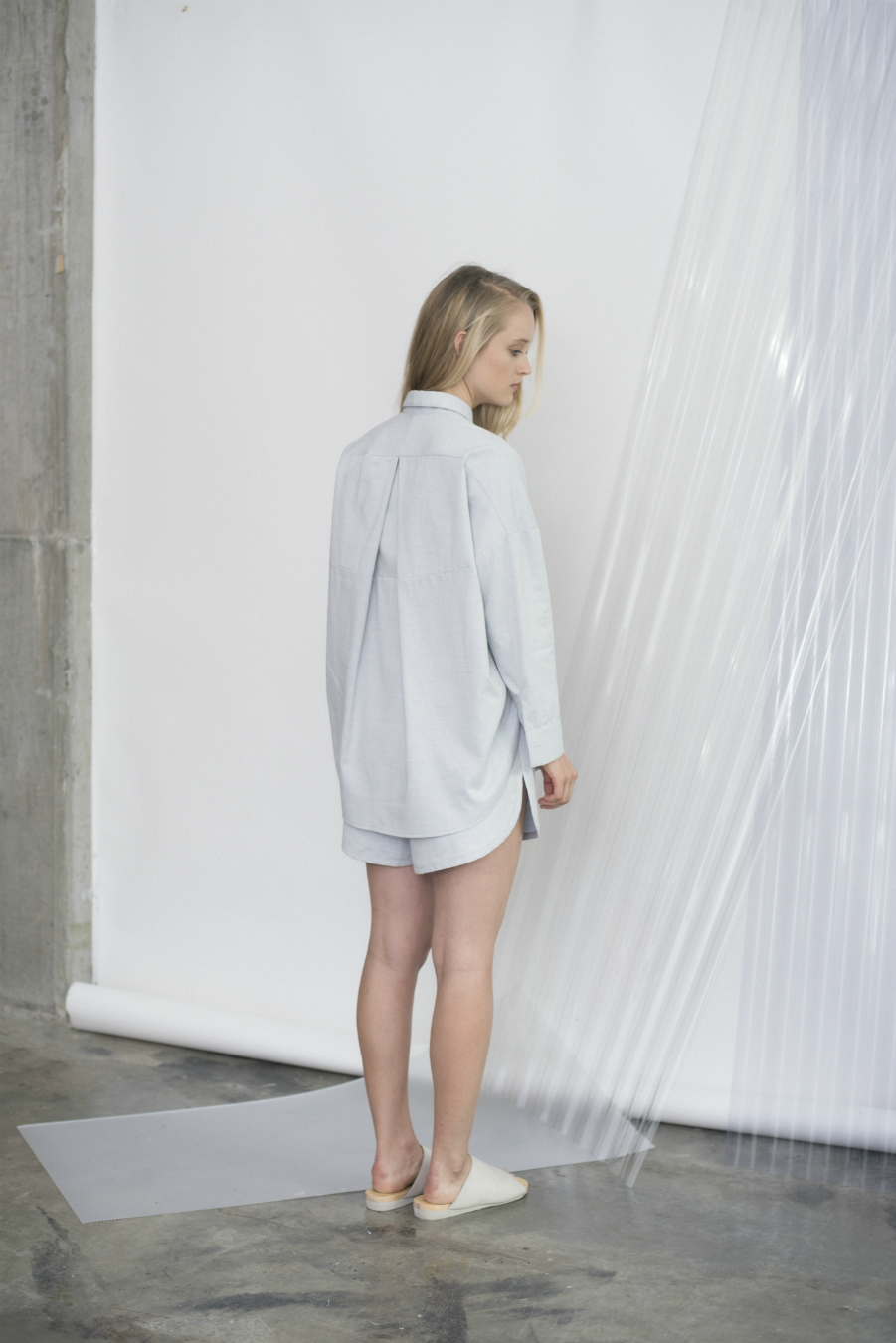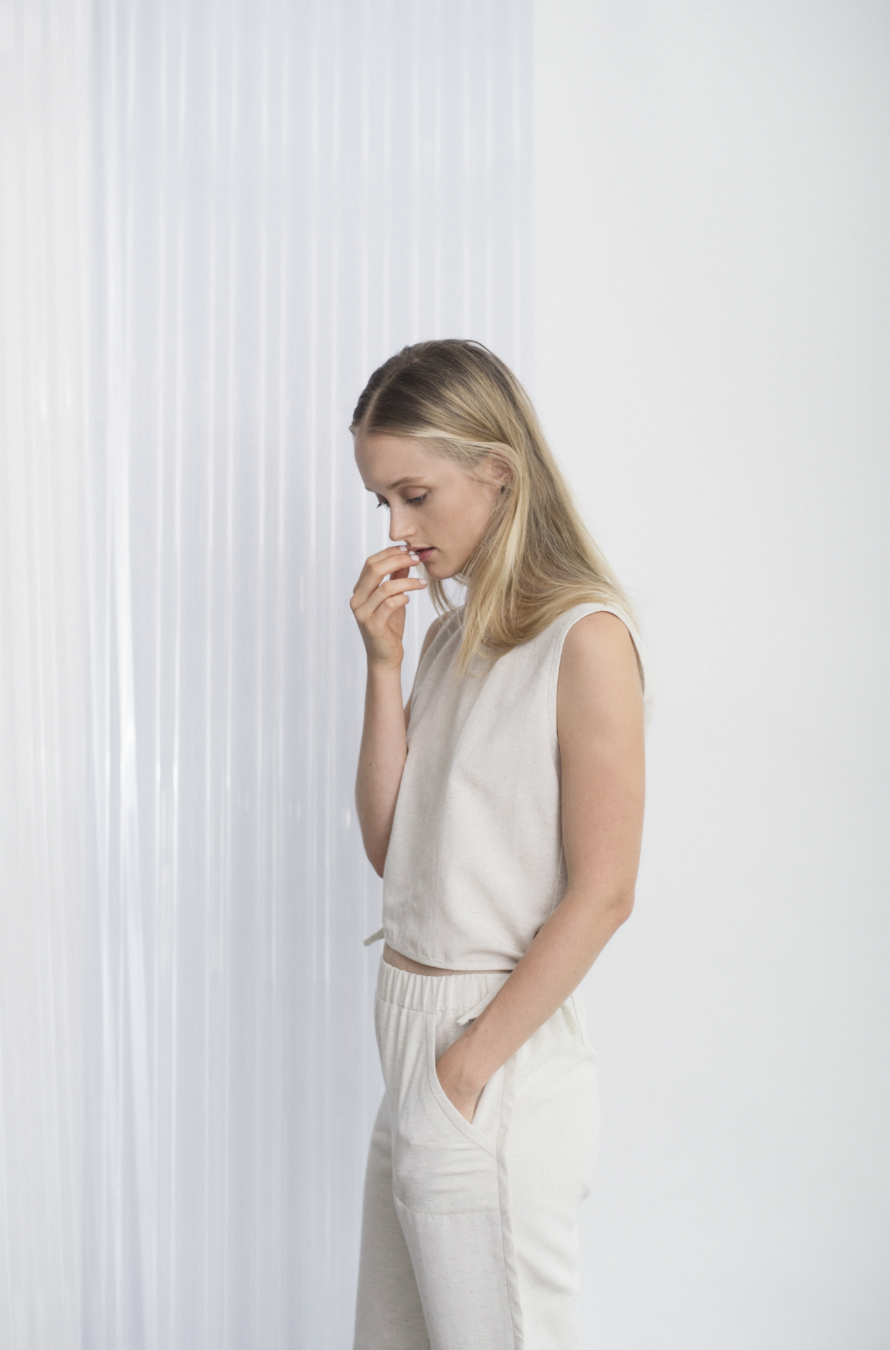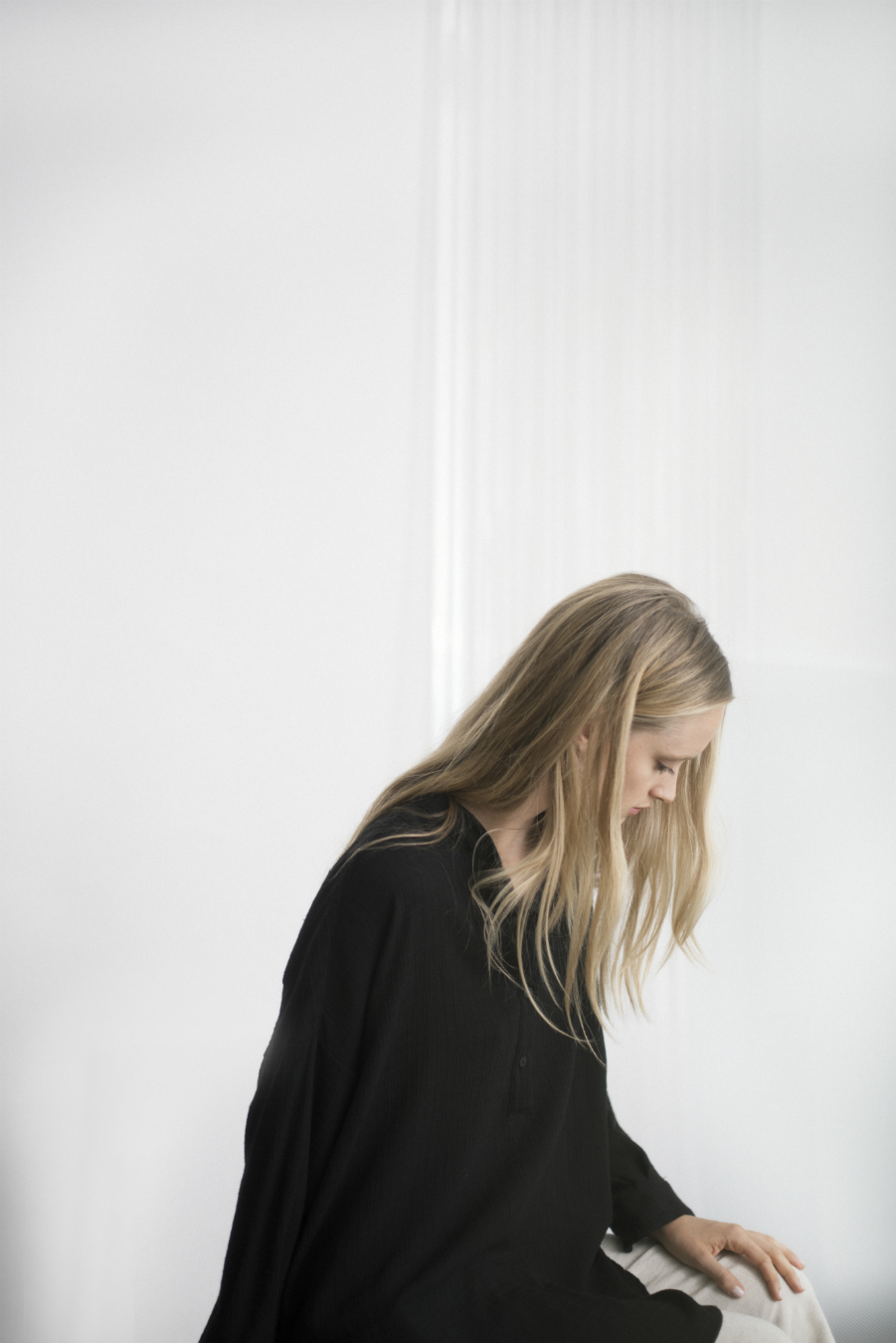When the doors first opened to our Chinatown clothing store Board of Trade Co., the goal was to provide a shopping experience for people who wanted high-quality products, with an out-of-the-ordinary flare, at an attainable cost. Our clothes weren’t necessarily expensive, but the value was supported by the overall craftsmanship and thought-out design that went into the cost of each item. As buyers, we were able to curate a selection of designers that not only provided the price point we were looking for, but a history of using sustainable methods with fair trade ethics. As we progressed into seasoned buyers and eventually worked with an experienced designer for our in-house line, the idea of starting our own brand, separate from the shop, began to form. That became reality with the commencement of Priory, which, upon recently deciding to shut down Board of Trade Co., we now focus all of our energy on.
Priory is a consideration of comfort, quality, and functionality that plays with textiles primarily sourced from the west coast of North America. It seems simple, but the process is beautifully complex. It’s been two years and five collections, and we are still learning as much as we can in order to keep our business growing and evolving. We serve retailers in Canada, the United States, Japan, and Europe, yet we still face the same challenge over and over when consumers wonder the following question: why is that dress $300?
The answer is not a simple one, and it cannot be determined for every fashion brand equally. There are many aspects that need to be considered when building a response to something like this. A fashion line has many moving parts, including overhead, material, labour, shipping, and general business costs—but it still does not provide an arbitrary answer as to why a Priory dress retails for $300 while something seemingly similar from a big-box store can come out to as low as $30. So, the issue is not in the answer, but instead, in the question. Are we asking the right thing? Can the retail value of a $300 dress be justified? It depends on who you talk to, but at Priory, the answer is yes. Here’s why.
The first monetary exchange in the manufacturing process of a garment is the fabric and hardware used. In Canada, we buy fabrics per metre, and a simple dress takes approximately two or three metres to construct. A nice cut of Japanese cotton could cost between $8 and $10 per metre. Using no buttons or zippers, the fabric cost of the dress would be $16. Then, we factor in the cost and time of a Canadian-based garment worker who cuts and sews the piece together at an ethical wage of $30 per dress, making the total $46. A general overhead of $5 is then added to cover trivial things like pattern costs and shipping charges, making our base cost come to $51.
On average, fashion wholesalers use a 2.0 markup to pay rent, salaries, and sales costs, making the wholesale value of the piece approximately $102. When a retailer purchases this piece, they will then mark it up anywhere from 2.0 to 2.5 times the original wholesale cost. Taking the lowest numbers provided, our hypothetical simple dress designed and made in Vancouver would cost a minimum of $204 in stores.
Based on this loose guide, a consumer can do simple math to dissect the costs that go into the production of a garment. When you see a dress for $19.99 at a corporate store, ask yourself: where have the corners been cut? Whose livelihood was expensed so that this shirt could retail at such a low price, and so that large conglomerates could yield hordes of product in such short periods of time? It is not just about taking advantage of cheap employment, but also the sacrifices made towards the quality of the garment and how negatively it affects the environment to produce in masses.
Board of Trade Co. and Priory have not made us by any means experts when it comes to breaking down the economic and ecological consequences of producing in the fashion world. We are merely professionals, not professors, and the experience we have gained has given us a perspective to understand how important it is to question the cost of not only clothing, but also food, technology, and any other product with a price tag. That is why it is so important to share this information, to raise awareness about the lack of ethics often seen in our industry.
We must question what we once believed were simple rights and wrongs in every facet of our lives, and choose to educate ourselves in regards to how our money is spent and where it is being distributed. The answer isn’t always clear, but the effort must be made to ask the right questions.
Like this story? Read more from our Style section.
















